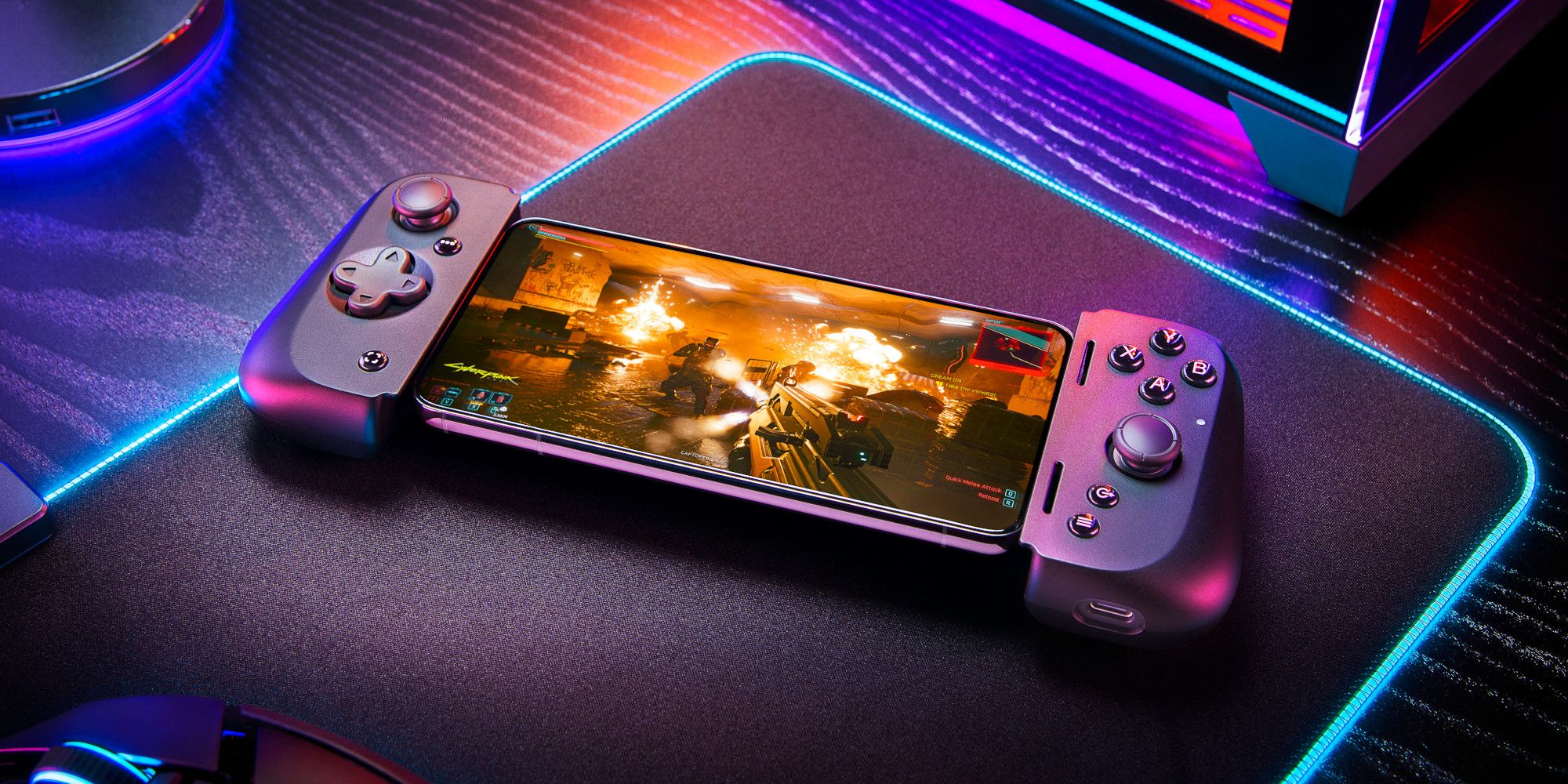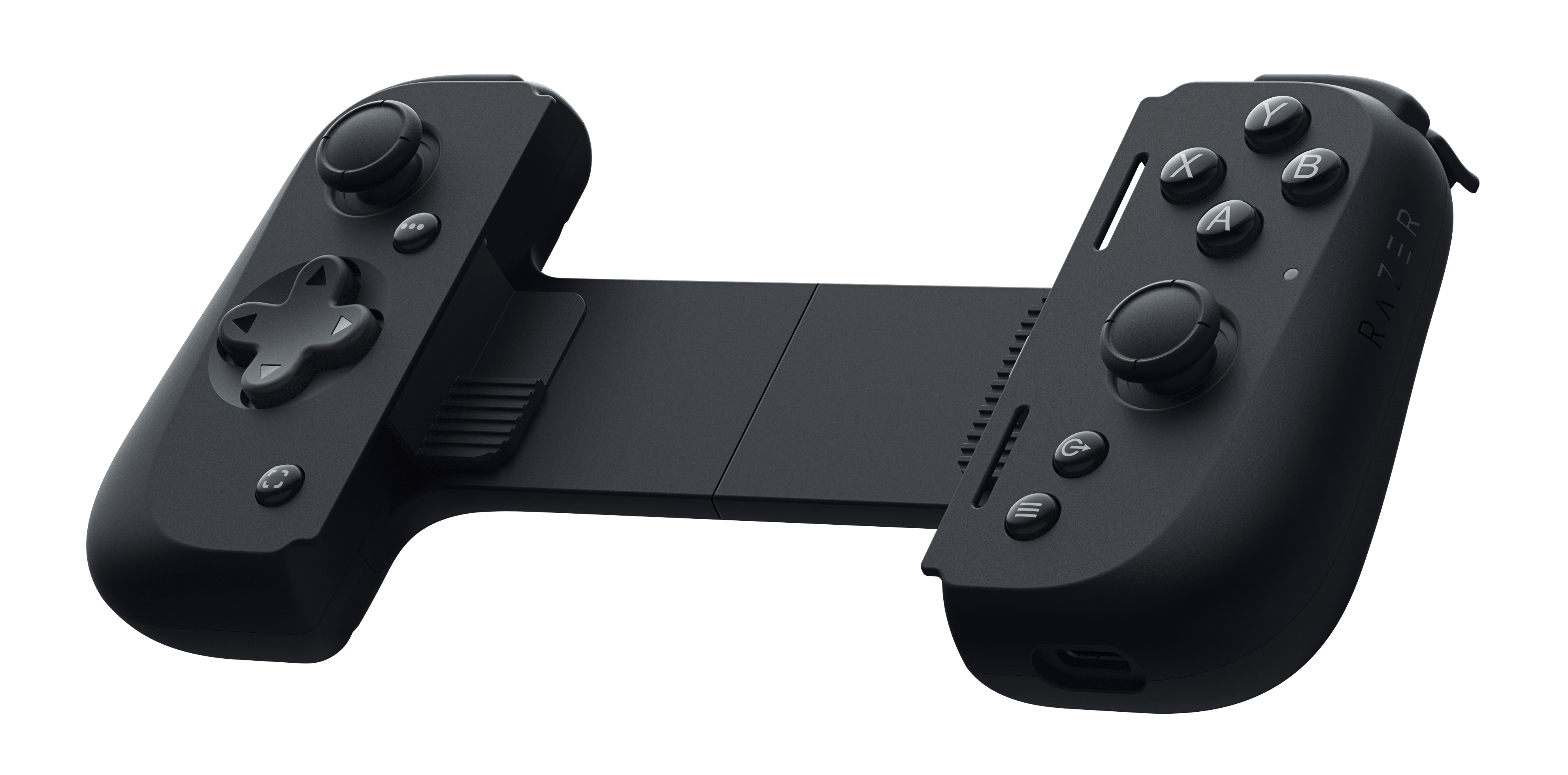I’ve been into mobile phone controllers long before Fortnite and PUBG made mobile gaming cool – which isn’t really something to brag about, more just a matter of fact. I had the original Moga bluetooth controller back when Asphalt and Modern Combat were the only mobile games with controller support. I was an early adopter of the Moto X, a modular phone that could snap onto a controller (sold separately, of course). I have plastic phone mounts for my Xbox, PS4, Stadia, and SteelSeries Stratus+ controllers. And of course, I’ve spent countless hours using the Razer Kishi, Razer’s original smartphone controller.
This week, I’ve been using the Razer Kishi 2, an upgraded version of the Kishi in almost every conceivable way, and for the most part I’m coming away impressed. Mobile is the biggest gaming platform in the world, and it’s unfortunate how long we’ve waited to get quality hardware and peripherals that support it. The Kishi 2 is the closest we’ve ever been to a console-quality controller. It’s not on par with a DualSense or Series X controller, but it gets the job done better than any mobile device ever has.
If you’re already familiar with the original Kishi, the best reason to upgrade to the Kishi 2 is, unfortunately, a matter of compatibility. I recently upgraded my Pixel 4 XL to a Pixel 6, a phone with a large camera bump that does not fit in the original Kishi. The Kishi 2 is compatible with Pixel 2 through 6, as well as every Samsung from S9 to S22, Note 8 to Note 10+, and both Razer phones, if you’re still rocking that dinosaur. Razer has taken the compatibility issues into account this time by including removable and replaced rubber pads that you can switch out if your phone needs some extra room. The Pixel 6 does not fit the Kishi 2 until you remove the rubber pad on the left and swap it with the included, thinner pad. It’s not the most elegant solution (I don’t want to keep track of little pieces of rubber) but hopefully it insures that the Kishi 2 is still compatible with phones in the future.
Razer has completely redesigned the Kishi from the ground up. In terms of form factor, the Kishi 2 strongly resembles the Backbone, which shouldn’t come as much of a surprise. The rounded controllers offer much better grip that the original. Where the original was mostly smooth on the back, you can use your pinkies or ring fingers to hold both sides of the Kishi 2 snuggly. It takes some getting used to, but it is a lot easier to hold.
All of the buttons have been replaced and resized. The four face buttons, the shoulder buttons, and the two new programmable buttons all have microswitch buttons that give them that great mouse-click feel, just like the Razer Wolverine controller. Though I would have liked to see the microswitches on the d-pad too, its new d-pad is atleast a lot less squishy than the original one. Overall, the new buttons feel great and true to Razer’s promise of “console-quality”.
The M1 and M2 buttons, which replace the typical back buttons on a pro controller, are incredibly useful. I like to map my jump button to one of them when I play shooters so that I can keep my right thumb on the camera stick while I jump. In Diablo Immortal, you can map you auto attack to one of them so that you can aim your shots with the right stick and fire with the triggers. These buttons will have different utility in every game, so they’re a great added feature that you can use whenever you need them.
The sticks are small with an extremely short throw, so if you’re used to longer stick this might be hard to get used to, but they’re otherwise solid. The triggers are one of the biggest improvements over the original, which had too much resistance and friction. The new triggers glide effortless and feel great to pull. The big issue I have with them is that they activate a micro-meter from the default position, so if you rest your fingers anywhere near them you’re practically guaranteed to make some accidental inputs. I wish there was a way to adjust or customize how far you need to pull the triggers because they’re way too sensitive. You can practically breathe on the triggers and they’ll activate.
That lack of customization is immediately apparent in the new Razer Nexus app. Though my version of the app is only pre-release, I was nonetheless underwhelmed by its features. You can customize your M1 and M2 buttons, set up your account for streaming, and launch your games, but that’s all it’s used for. I would have liked to see some more in depth controller customization there, but it’s fairly barebones. In fact, since it’s only used for remapping those two buttons, it would be better if there was a button-combo you could use to map them so that you wouldn’t have to open another app every time you want to change them.
Compatibility is definitely an issue. I ran through Game Pass, Stadia, and my GeForce Now library and found it worked just as well as a normal controller. Diablo Immortal and Fornite work great as well. Beyond that, compatibility is more limited. For Call of Duty Mobile, you have to connect an Xbox controller first via bluetooth before the Kishi will work. Apex Legends Mobile currently does not support the Kishi or Kishi 2 on Android, though the developers have said they’re working on fixing that. Genshin Impact still does not have controller support on mobile, and neither does PUBG Mobile. The Kishi 2 will take you pretty far, but it isn’t the ultimate mobile solution yet. A lot of the biggest games are still touch-only, unfortunately.
Aside from the lack of rumble and my issues with the trigger sensitivity, the Kishi 2 is still the closest thing you can get to a Switch or Steam Deck experience on your phone. Like all mobile controllers, the Kishi 2 suffers for being so small. It doesn’t fold up like the original and instead features solid, extendable bridge (for “a stable connection”, Razer says) so it’s already not nearly as portable as the original. Perhaps to compensate, Razer designed the controllers to be no longer than a standard phone. They’re nearly 25 percent shorter than Joy-Cons, which themselves are tiny, compared to a DualSense. I would have preferred a more robust, ergonomic design for the controllers. This is designed for portability and brief play sessions, but thanks to things like Game Pass, mobile isn’t just a short-session platform anymore. Maybe there’s a Kishi Pro model in the pipeline that will fit my needs better, but until then, the Kishi 2 is the best mobile controller you can get.
Source: Read Full Article

